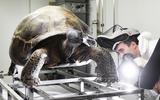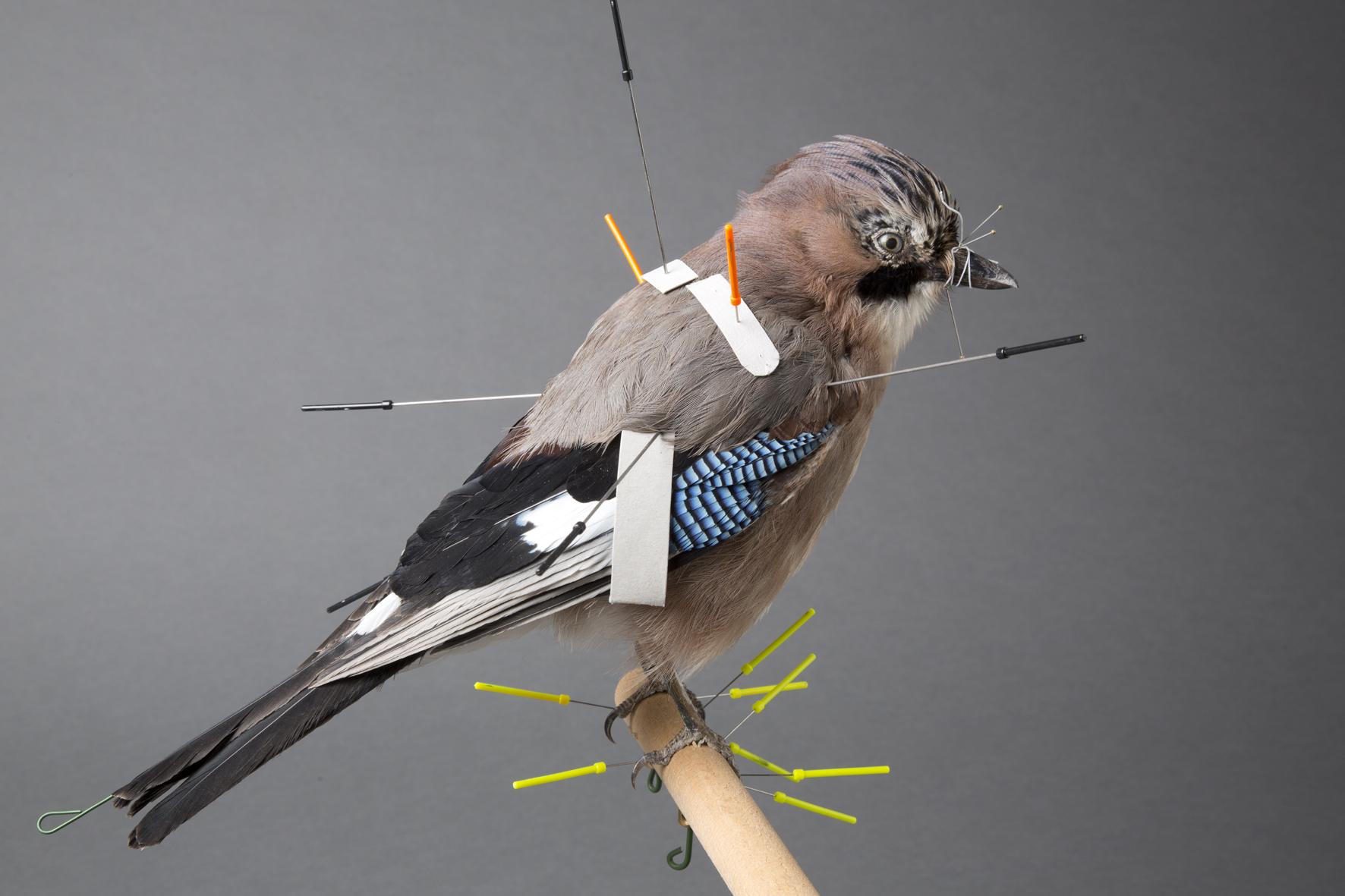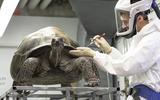The preparation studio at the Natural History Museum of Bern has always enjoyed global recognition. Distinguished preparators, such as Georg Ruprecht (1887–1968), were part of a tradition of taxidermy, which played a decisive role in shaping the development of the museum. Taxidermy is a technique used to preserve vertebrate animals for display – that is to say, the specimens are shown in exhibitions and should therefore look particularly lifelike. In the years 1923–1924, the big game hunter Bernhard von Wattenwyl bequeathed his entire collection of trophies from an African expedition to the institution, which proved to be a milestone for the museum. Experts considered the presentation of these large African animals in display cases – so-called dioramas – to be lifelike and especially timeless. The dioramas were also a great success with visitors to the museum.
Collections as contemporary witnesses
The museum moved to its current location in 1936. The opening of the new building on Bernastrasse created an opportunity to display the specimens in dioramas and thereby forge new paths in exhibition technology. Nowadays, the task of preparators is to maintain and preserve this cultural asset. The rising importance of nature conservation and the loss of biodiversity are leading to a rethink among those who deal with collections. This shift can also be felt in the preparator’s job description. Conservation issues are becoming increasingly important and shine a spotlight on collections as forms of documentation and archives of biodiversity.
Solution-focused
As preservation techniques in their breadth of variety require extensive knowledge, external experts are brought in where needed to work on developing solutions. Our preparation studio occupies a leading position in the area of non-toxic methods for pest control. A sophisticated monitoring system with clearly defined processes and targeted control facilitates constant surveillance of the infestation. Thanks to this comprehensive knowledge of modern and natural preservation techniques, the studio can forego the use of damaging biocides. The ‘biocides’ working group of the Swiss Association for Preparation in the Natural Sciences is working under the leadership of our preparator Martin Troxler to develop guidelines for dealing with damaged objects in tandem with various authorities.

Research, or simply marvel?
Acid-free materials, such as plaster, are resistant to ageing and have been found to remain unchanged over a long period. For scientifically important objects in particular, ageing-resistant materials such as these must be used. These specimens are found in our collection, where they are stored in a cool place, free from dust and protected from light.
Specimens for education and communication serve as training material. This means that modern and less long-lasting plastics can be used for this purpose, which saves time and costs. Objects of this kind can be subject to medium- or long-term damage as a result of being touched or the increased exposure to light. However, in light of the value to visitors, this is deliberately accepted in situations where the objects are not irretrievable.
The journey to the collection, diorama or jar
Our preparators always have the same aim in the back of their minds. From the humble fish to (theoretically) the mighty elephant – the name of the game is always to preserve an object for as long as possible and, depending on the job, in a way that is also true to life. This includes the preservation of the form, structure and colouring of an object. The procedure varies considerably depending on whether a specimen is being prepared for a collection or for exhibition.
For years, our preparation studio has pursued tanning techniques – methods for preserving skin. Preparators process raw skin to turn it into a material suitable for their purposes. This is comparable to the differences between producing a leather shoe and producing a leather jacket. In collaboration with the tanning school in Reutlingen, technical standards for zoological preparation have been developed and published in the book Hautkonservierung: Handbuch für das zoologische Präparatorium [Skin Preservation: Handbook for Zoological Preparation].
Producing bone specimens for collections involves considerable demands in terms of preservation techniques. Among other things, the fats contained in the bones need to be completely removed. This is the only way to ensure the bone specimens can really be stored for the long term. In collaboration with other institutions, the preparation studio has also developed a unique and brand-new facility for removing fat from bones, which was installed in 2019.
In dermoplasty, a sub-section of taxidermy, preparators replicate animal bodies, mostly of larger vertebrates, in plaster or plastic. Subsequently, they cover the replica with the preserved original skin. Working with X-ray videos from the Institute of Applied Zoology in Jena, the preparation studio has taken a significant step forward in this area. The X-ray videos improve the anatomical accuracy of the objects considerably, as they reveal the behaviour of a skeleton not just as a snapshot, but in motion.
The preparation studio has also developed a high level of methodological expertise in the area of fluid preservation and sealing techniques for wet specimens thanks to a particular project, Projet Lac. Projet Lac aims to capture and record the diversity of fish species in Switzerland’s lakes. The glass jars used for this are not simply screwed shut or covered as they were in the past, but are sealed shut properly with lasting effect using negative pressure. This inhibits evaporation and the chemical dissolution of the fluid, as oxygen exchange cannot occur.
The four cornerstones
The most important area of study is preservation techniques: keeping the biological material stable for as long as possible. Materials science is another key component of the training to become a preparator. Anatomical knowledge about the movement of animals also has to be imparted – one of the ways students acquire this is by observing and interpreting animal images and videos. Sculptural design is another part of the programme. True scale modelling or carving skills are developed.
Supporting future preparators
For the preparation studio at the Natural History Museum of Bern, a commitment to promoting the next generation of the profession is a strong concern. There is no state certificate recognising the profession of ‘preparator’, and therefore no state support for this either. Consequently, there are no vocational schools or other educational institutions in Switzerland offering a course in the area of animal preparation. To counteract this deficiency, the preparation studio at the Natural History Museum of Bern has periodically offered apprenticeships for many years now.





